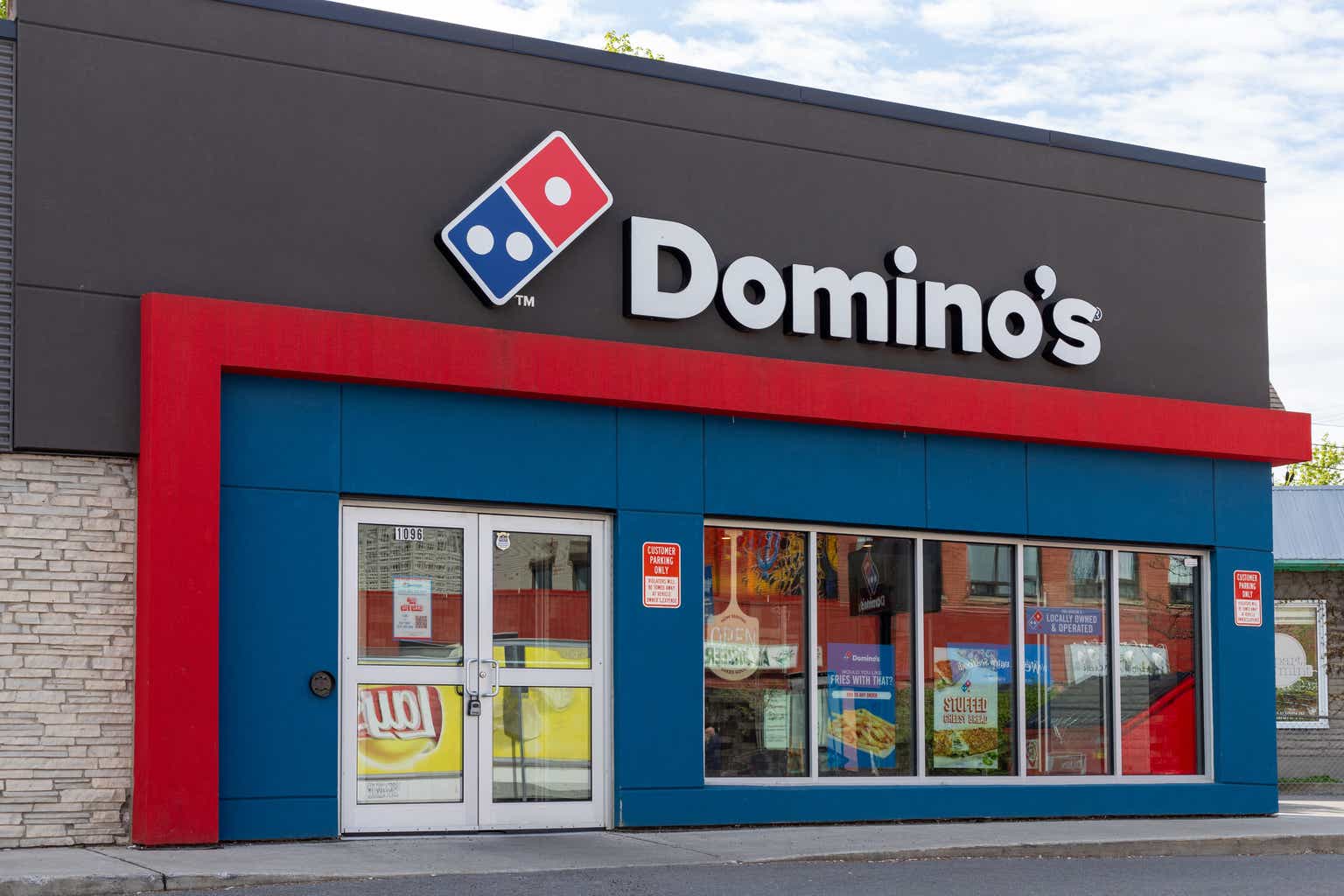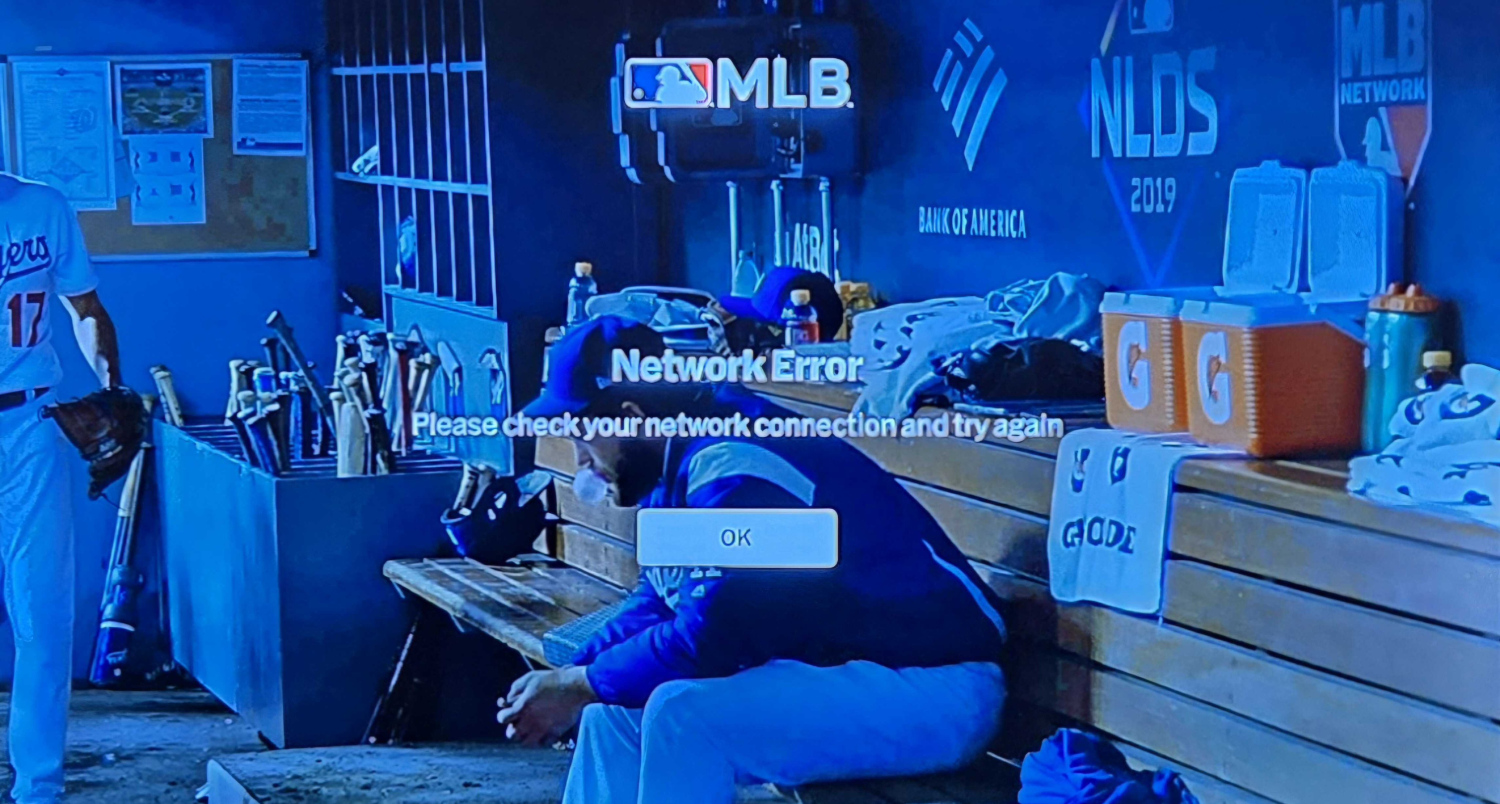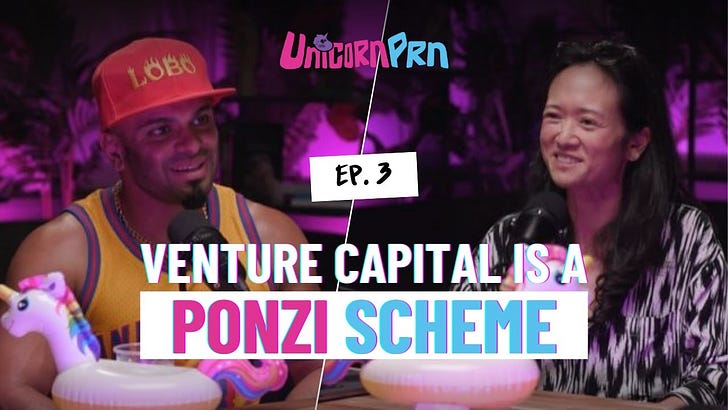🎧 Listen on → 🍎 Apple Podcasts 🎵 Spotify ▶️ YouTube 📡 RSS Feed
Is venture capital the fuel behind world-changing innovation… or just a glorified pyramid scheme where everyone’s pretending they’re building the next Uber while actually praying for a higher valuation before the money runs out?
“If you can’t grow into your valuation, just find another sucker who thinks you will.”
— Every startup founder in denial
👋 In Episode 3 of UnicornPrn, Melissa and Lloyed expose how the game is played — founders chasing funding like junkies, markups for AI buzzwords duct-taped to a landing page, unicorn markdowns like it’s Black Friday, and accelerators slapping lipstick on broken products for Demo Day…
In this episode, you’ll learn:
✅ Why VC math makes founders lie to themselves (and investors)
✅ The billion-dollar valuation addiction—and who’s really winning
✅ The culture of fake wins and quiet shutdowns
✅ What happens when the market corrects and the music stops
✅ The NEW Startup OS
Let’s get into it →
Let’s call a spade a spade.
Venture Capital sits at the top of the startup food chain, but at times it behaves a lot like multilevel marketing. Early investors cash out by selling a dream to later ones. Founders raise at higher valuations to justify the last round. And everyone’s just hoping someone with deeper pockets and fewer questions shows up before reality does.
There’s just one problem: most startups aren’t worth what they raise. And they never were.
VC has always been one of the riskiest bets in an institutional investor’s portfolio, especially compared to traditional assets like public equities, private equity, hedge funds, real estate, fixed income, and commodities.
It sits in the illiquid, high-volatility bucket: long hold times, high risk, and the hope of outsized returns, like catching Stripe, Airbnb, or OpenAI early.
The expectation? Most bets go to zero, but a few will 10–100x and make the whole portfolio look genius.
VC was the outlier that made the impossible possible.
Without it, we don’t get the internet, the iPhone, CRISPR, self-driving cars, or commercial rockets.
VC didn’t just fund moonshots, it reshaped how we move, stay, eat, socialize, scroll, and overshare.
It funded the rails for much of modern life, and the world is better for it.
But here’s where things started to go south
Somewhere along the way, every company started calling itself venture-scale…
And the Unicorn Dream went mainstream, breaking everything.
Let’s clear this up.
A venture-scale company isn’t just “a good business.”
It’s a rocket ship with a believable path to $1B+ outcomes—fast enough to deliver 10x returns or more on invested capital, ideally within 7–10 years.
That means:
-
Giant TAM (Total Addressable Market)
-
Network effects, category dominance, or platform potential
-
A winner-takes-most dynamic
-
Scalable unit economics at massive scale
The kind of startup that doesn’t just survive, but explodes into a generational company.
But the problem? Most startups aren’t that.
-
They’re great businesses trapped in a venture-scale costume
-
Growing fast to please the cap table
-
Spending wildly to chase top-line
-
Burning years and millions trying to fake a trajectory they were never built for
What the “venture-scale journey” looks like:
-
It’s not a 9-5 — it’s a multi-year emotional rollercoaster
-
You need to accept the tradeoffs: control vs. capital, stress vs. scale
-
You’re assembling a high-agency, resilient crew to ride the chaos with you
-
You’re ready for board meetings, fundraising cycles, pivots, and pain
-
You know the stakes: burn rates, dilution, layoffs, copycats, and exits
Once upon a time (2013, to be exact), Aileen Lee at Cowboy Ventures coined the term unicorn… a rare, mythical startup that hit a $1B valuation.
At the time, it was meant to describe something almost impossible, a company that grew at an insane pace. But Silicon Valley heard “unicorn” and thought:
“Yeah, let’s make this the new bar for success.”
Fast forward to 2020, and nearly two unicorns were minted every day.
-
2003-2013: Finding a unicorn was like spotting Bigfoot
-
2015: 50 unicorns—startups go crazy trying to be one
-
2021: 1,200+ unicorns, mostly overvalued and burning cash
-
2023: More unicorns dying than being created. Oops.
Somewhere along the way, being a unicorn stopped being rare and started being expected.
Founders didn’t start companies to solve problems. They started them to become unicorns. And that’s when things got stupid.
Here’s the inside scoop most founders won’t admit: most accelerators say they help you build a business…
But in reality, their success is measured by how fast they can markup your valuation.
Their job? Get you from a $3M cap SAFE to $15M by Demo Day. Boom—instant paper returns on their 5%.
Your job? Pitch like a peacock, inflate your TAM, and get someone to bite.
You think you’re getting mentorship. What you’re really getting is trained to look fundable—to craft the right narrative, say the right buzzwords, and posture like a venture-scale founder, whether or not your business actually is… or whether you even understand what that journey truly takes.
Blame it on the spreadsheet mafia.
The startup world adopted a simple formula: Triple-triple-double-double-double growth in the first 5–7 years, or GTFO… Specifically:
That means:
-
Year 0: $1M ARR
-
Year 1: $3M
-
Year 2: $9M
-
Year 3: $18M
-
Year 4: $36M
-
Year 5: $72M+ ARR
The goal? Hit $100M+ ARR in 5–7 years.
That’s what it took to go from Seed to Unicorn. Anything else was considered too slow and not venture-scale.
Every investor deck became a work of fiction: hockey sticks, CAC payback periods, unit economics “coming soon.”
And because valuation became the scoreboard, founders started believing in their own fantasy projections.
Not because they were liars, but because that’s the only way to even get in the door with a VC.
Delusion became a prerequisite.
Every founder needs a little delusion—it’s how you jump out of the plane and build your parachute on the way down.
But somewhere between your third fundraise and fifth “growth experiment,” that delusion stops being motivational and becomes pathological.
You convince yourself you’re on a $100M ARR path and worth $1B, even though you haven’t nailed product-market fit.
You take on more capital to keep the charade going. And your VCs? They help you find another believer to keep the markup party alive.
At some point, you’re not building a business—you’re just perpetuating the illusion.
Here’s a story that starts like most unicorn pitches… with bold claims, big checks, and a founder chasing legacy.
A friend of ours shut down his company after 10 years, $50M in venture capital, and $1M in friends-and-family money.
Gone. Dead. No returns, just regrets instead.
Back in 2018, he tried to recruit Lloyed. The pitch?
“We’re going to be a unicorn. Get in now, or get left behind.”
Lloyed passed. That’s when the founder leaned in and said the quiet part out loud:
“Your company is a lifestyle business. You’re thinking too small.”
Come again?
Apparently, unless you’re raising monster rounds, hiring an army, and swinging for a $1B+ exit, you’re wasting your life.
Fast-forward a few years:
Lloyed and his co-founder bootstrapped Boast.AI to $10M+ ARR.
They had a life-changing liquidity event by selling a partial stake to a growth equity fund and stepped into board roles.
They didn’t raise $50M.
They didn’t burn $49M trying to find product-market fit.
They didn’t end up with zero.
They built a real business, the kind you can run, scale, and step back from.
And they did it around the same time our founder friend shut his doors for good.
Ambition isn’t about vanity metrics… It’s about building a business that won’t ghost you in a downturn.
That founder wasn’t alone.
Another friend raised $75 million, scaled to $35M ARR, and for a while, everything looked golden. He had the Forbes profile, the hype round, and the “we’re just getting started” energy.
Then 2023 happened.
Growth stalled. Layoffs hit. Expansion plans died quietly in the Q1 board meeting.
Now? He’s spending his days rewriting pricing decks and trying to squeeze upsells out of the same 25 enterprise customers… while praying a strategic acquirer takes the bait.
We grabbed lunch last month. He didn’t touch his food. Just stared down at the table and said:
“We’re worth $1B on paper… and I feel like I’m running a ghost town.”
This is the part nobody preps you for.
You get the funding. You build the machine. And then you stall.
Eventually, you realize you’re operating a billion-dollar startup with no momentum, no margin, and no way out.
A unicorn in valuation. A zombie in reality.
Here’s a Ponzi-adjacent move dressed up as a strategic acquisition: Founders selling their flatlined startup to an overvalued one, in an all-stock deal.
One founder friend had a solid team, a loyal customer base, and $10M of investor money remaining in the bank—but traction had stalled, and the founders were burned out.
Then a “hot” startup—fresh off a monster round at a billion-dollar valuation during the pandemic—offered to acquire them. All stock. No diligence. Just vibes.
On paper, it looked like a win. The acquiring company was buzzy, still getting headlines. Investors could mark up their equity instead of writing it off. Founders could say, “we got acquired.” And nobody had to write a postmortem.
But under the hood? The acquirer was bleeding cash and barreling toward its own cliff.
So what really happened? The startup traded $10M of real investor money for stock in a zombie unicorn with the same inevitable fate, just slightly delayed.
The founders got narrative. The investors got fiction. Nobody got their money back.
If you take other people’s money, your job is to protect it, not bury it in someone else’s cap table.
Don’t confuse a soft landing with a responsible one. Sometimes “we were acquired” just means “we bailed early and hoped no one noticed.”
Because at the end of the day, you didn’t save the ship… You just rearranged the deck chairs on the Titanic.
Here’s what the media won’t tell you:
-
Many unicorns are unicorns on paper, but zombies in practice
-
Most “acquisitions” are acqui-hires or asset fire sales
-
Most “quiet shutdowns” had founders cashing out early
And yet, those same founders are now raising new rounds, launching new companies, or becoming angel investors.
It’s a cycle. And it repeats… until someone breaks it.
Let’s talk about Henry Shi, co-founder of Super.com (formerly SnapTravel). He built a $100M+ ARR unicorn, raised over $150M in VC funding, and scaled a massive team.
Textbook success story, right?
Not quite.
Here’s what Henry says now:
“If I were to start another company today, I would not do the same thing again.”
Why? Because chasing the unicorn playbook cost him something even more valuable than cap table ownership: control.
To get to $100M+ ARR, he:
-
Hired hundreds of people
-
Pitched to hundreds of VCs
-
Went through the exhausting Series A, B, C treadmill
-
Lost the ability to steer the company without multiple layers of investor oversight
Despite all the traction and metrics, raising $150M required 250+ VC pitches, 99% rejections, and months of energy drained… all just to keep the lights on and the machine growing.
And guess what? None of it made the journey more fulfilling. It just made it opaque, frustrating, and distracting.
If Henry were starting today, here’s how he’d do it:
-
AI-native from day one
-
Bootstrapped or Seed-strapped (raise one small round to profitability) to keep optionality and control
-
Focus on speed, autonomy, and customer obsession over board meetings and burn rates
-
No massive headcount
-
No traditional VC treadmill
“The next decade won’t be owned by unicorns. It’ll be ruled by autonomous businesses—AI-native orgs with lean ops, superhuman productivity, and minimal headcount.”
See Henry’s leaderboard of AI-native startups printing millions with <50 people.
For the last decade, “Unicorn” was the crown jewel of startup vanity. A billion-dollar valuation? That meant you made it, baby. TechCrunch headline secured. Fancy hoodie approved. Down round pending.
But somewhere between the third pivot and the fifth round of layoffs, reality slapped the ecosystem in the face—and out came a new hero: the Centaur.
Coined by Bessemer Venture Partners in 2022, a Centaur is a private SaaS company with $100 million or more in ARR. No more pretense. No more “on paper” unicorns with $12M in revenue and $900M in burn. Just cold, hard, bankable revenue. Real traction. Product-market fit that doesn’t need six layers of narrative architecture to explain.
Why does this matter? Because when the market corrects (as it did in 2022), investors remembered a very simple truth: Valuation is a story. ARR is a scoreboard.
In Bessemer’s words:
“At $100 million ARR, a startup is an undeniable success. It is impossible to build a $100 million ARR business without strong product-market fit, a scalable sales and marketing organization, and a critical mass of customer traction.”
Translation: You can’t fake your way to Centaur status. You either have the customers… or you don’t.
Remember when it was cool to raise $150M just to get to $15M ARR?
Yeah, that era is over.
Centaur status isn’t just a new milestone—it’s the ultimate filter for signal vs. noise. Because in this brave new world of down rounds, cash discipline, and AI-native competitors doing 10x your output with 1/10th the headcount, $100M ARR is the line in the sand.
Unicorns are paper tigers. Centaurs are actual operators.
Unicorns win headlines. Centaurs win markets.
And here’s the kicker: out of 1,500+ Unicorns, there are only ~160 Centaurs—making them rarer and way more badass than a fictional billion-dollar valuation.
You want to know which startups were always doomed?
Just look at ARR per Employee. It’s the canary in the unicorn coal mine.
Take Hopin and Bench Accounting:
Hopin hit ~$100M ARR with 1,100 employees. That’s about $90K per head. Bench reached ~$15M ARR with 650 people—roughly $23K per head. Both are now dead.
Not because they didn’t execute, but because they were playing the wrong game.
Now compare that to the AI-native breed:
Mercor does $48M ARR with just 30 people. That’s $1.6M per employee. Aragon? $10M ARR with a 9-person team—over $1.1M per head.
That’s not a margin difference. That’s a new operating system.
If you’re not tracking ARR/FTE, you’re not tracking reality.
There are two startup playbooks in the wild:
Old OS (Unicorn Bloatware):
New OS (Autonomous Businesses):
-
Lean teams, AI-native processes
-
Strategic autonomy at every level
-
Operate at 10x output with 1/10th headcount
-
Focus on customers, not just capital
One’s bloated. The other’s built for survival.
It’s time to stop treating fundraising as success. That’s not the game.
The game is:
Can you build a profitable company that people love and pay for?
Your scoreboard isn’t your valuation.
It’s your retention, margins, growth efficiency, and ARR per head.
You don’t hire to scale.
You automate to scale.
You don’t raise to survive.
You raise to accelerate what’s already working.
Most founder advice is about sprucing up your pitch, inflating your TAM, and making your startup look like a billion-dollar gold mine.
But the real questions aren’t about the money you want to raise. They’re about the life you actually want to live after you raise it.
Because once the money hits your bank account, the pressure hits your soul.
So before you step onto the VC treadmill, ask yourself:
-
💭 What does success mean to me—personally?
Not money. Not vanity metrics. But the life you’d actually live if you had the money already. -
💸 How much money would it take to fund that life… forever?
Be honest. You probably don’t need $100M to be happy. You just need to stop pretending you do. -
🚩 Is there a version of my company I don’t want to work for?
If you’re not careful, that’s exactly the version you’ll end up stuck in. Use this to define your non-negotiables. -
🕰 How long do I want to run this thing?
Because if the honest answer is 5 years, don’t build a company that traps you for 15.
We don’t ask these questions enough, because somewhere along the way, “thinking clearly” got rebranded as “thinking small.”
But here’s the deal:
When you’re burnt out, stuck in a board-controlled company you barely recognize, society won’t bail you out…
You’ll be the one holding the bag—tired, alone, and still trying to convince yourself it was “worth it.”
Great companies are built on great alignment. Start with yours.
Let’s get real: if your plan is to raise → inflate valuation → raise again → pray for exit…You’re not a founder. You’re a con artist with a Cap Table.
Here’s a better playbook:
🏗 Start with customer pain, not investor hype.
Solve something real. Profitably. Before you fundraise.
⚙️ Leverage AI like it’s your cofounder.
Automate ops. Boost output. Build with leverage from Day 1.
👥 More people ≠ more progress.
Bigger teams slow you down. Stay lean. Move fast.
📊 Obsess over real metrics.
Measure user engagement religiously. Nail Net Dollar Retention. Know your CAC payback period cold. Fixate on ARR per employee. Guard your gross margin like gold.
🛠 Don’t scale a leaky funnel.
Pouring money into growth without retention is just a shortcut to bankruptcy.
🚫 Don’t let VCs define your ceiling.
Most unicorns are just survivorship bias in a pitch deck. Build something that thrives—with or without them.
🧠 Tiny + Profitable > Big + Burnt Out.
A calm $10M ARR machine is sexier than a $1B zombie unicorn on life support.
💸 Profit buys you time. Burnout buys you regret.
Stay in the game long enough, and luck will find you. Just don’t burn out trying to impress people who won’t be there when it matters.
📈 Only raise when your engine works.
Use capital to accelerate what’s already working, not to search for answers.
🪵 Build a business that could live forever—even if you sell it tomorrow.
Because freedom, durability, and staying power will always be hotter than your last TechCrunch headline.
Fundraising isn’t evil—it’s just frequently misused.
Raise if:
-
You have a venture-scale business and are prepared for the journey
-
You’ve got customer pull and real traction
-
You need capital to capture demand, not find it
-
You know exactly how $1 will become $3
Don’t raise if:
-
You’re faking a venture-scale trajectory just coz you need startup capital
-
You’re “figuring it out”
-
You want validation
-
Your business has a thin margin and no retention
And never raise from people who don’t understand your business model or market. Your cap table should be strategic, not just rich.
Unicorns had their moment. The future belongs to Centaurs—lean, autonomous, AI-native businesses charging toward $100M ARR without the bloat.
If you’re still trying to brute-force scale with headcount and FOMO fundraising, you’re already obsolete.
The next generation is building quietly, profitably, and autonomously.
You can keep chasing UnicornPrn…
Or you can start building a real business. Your call.
🎧 Listen on → 🍎 Apple Podcasts 🎵 Spotify ▶️ YouTube 📡 RSS Feed
📩 Forward this to a founder before they chase UnicornPrn and regret it.
Got something spicy you want us to cover? DM us on LinkedIn — it’ll stay anonymous.
🌈 Unfollow the Rainbow!
— Melissa & Lloyed















